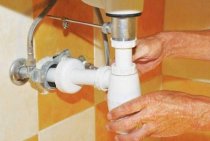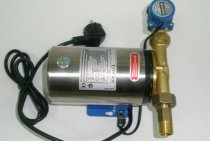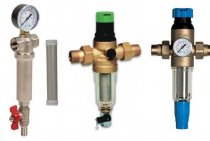What regulations should be used in the construction of treatment facilities
The main documents regulating the requirements for wastewater treatment plants are building codes and regulations (SNiP) and sanitary standards and regulations (SanPiN). SNiP determine the procedure for designing a treatment plant and its construction.
The main document that needs to be studied before designing a treatment plant is “Sewerage. External networks and structures”.
Calculation methods and rules for the construction of sewerage treatment networks inside the building are given in "Internal water supply and sewerage of buildings".
Also related to this topic are:
- "Hygienic requirements for the protection of water bodies";
- "External networks and structures of water supply and sewerage".
- "Organization of construction".
SanPiN contain sanitary and hygienic standards and requirements. According to them, the treatment facilities are checked for compliance.
The main ones include:
- SanPiN 2.1.4.027-95 "Zones of sanitary protection of water supply sources and water pipelines for household and drinking purposes";
- SanPiN 4630-88 "Sanitary rules and norms for the protection of surface waters from pollution";
- SanPiN 2.2.1/2.1.1.567-96 "Sanitary protection zones and sanitary classification of enterprises, structures and other objects";
- SanPiN 2.1.4.544-96 “Requirements for water quality of non-centralized water supply. Sanitary protection of sources.
You also need to study the MDK 3-02.2001 "Rules for the technical operation of systems and facilities for public water supply and sewerage." And among the federal laws, some of the main ones are: the Water Code of the Russian Federation and the Federal Law of December 7, 2011 No. 416-FZ “On Water Supply and Sanitation”. The latter regulates legal relations concerning treatment facilities.
What documents are required for wastewater treatment plants
To put treatment facilities into operation, it is necessary to prepare:
- act of land allocation for the construction of treatment facilities;
- acts on hidden work for each structure;
- acts for checking the operation of all mechanisms, auxiliary units, power supply, ventilation and heating systems;
- acts of hydraulic testing of pipelines and structures;
- executive master plan of structures with communications and reference data, profiles for water and silt;
- executive drawings of structures;
- technical passports for factory products, for standard and non-standard equipment and devices, for concrete laid in the structure;
- data on the hydrogeological conditions of the construction site;
- design of treatment facilities with full technological calculation;
- permission to discharge treated wastewater;
- schedule of analytical control of treatment facilities.
Before the delivery of treatment facilities, the contractor must carry out:
- hydraulic and technological testing of pipelines and tanks;
- complex testing of equipment under load on water (at least 3 days);
- verification of the interaction of all structures.
The delivery of the result of work by the contractor and its acceptance by the customer is formalized by an act signed by both parties (clause 4 of article 753 of the Civil Code of the Russian Federation).
The customer organizes a working commission. It includes representatives of: the customer, the general contractor, the operating organization, subcontractors, the design organization, the trade union of workers, and the state sanitary inspection bodies.
Working committee:
- checks the compliance of the constructed structures with the project;
- checks the readiness of each treatment facility and equipment for commissioning;
- tests facilities and equipment;
- takes into operation separate auxiliary buildings and structures.
The working commission can create subcommittees for the acceptance of individual structures, check the volume and quality of hidden work, the compliance of the data in the documents with the actual state of the structures.
Design of V&V systems, treatment facilities, SPS, VZU, VNS
Water supply
Water supply is a set of measures to provide water to its various consumers. The subsection "Water supply" includes the following parts - water treatment, domestic and drinking water supply, technical water supply, recycling water supply, fire water supply and pumping stations.
The parts contain the following information: description and characteristics of the water supply system and its parameters, information on existing and planned water supply sources, hydraulic calculation of systems, water flow design, information on the necessary engineering equipment, description of the water supply automation system, qualitative analysis of water, measures for the rational use of water and information about materials and measures to protect them from various influences.
Drainage
Water disposal is a complex of equipment, networks and structures designed for the organized reception and removal of contaminated water through pipelines, as well as for their purification and neutralization before disposal.
The subsection "Water disposal" includes the following parts - household and industrial sewage, drain, storm sewer, pumping stations, wastewater pumping stations, storm and domestic wastewater treatment plants.
The parts contain the following information: assessment of the volume of wastewater and rainwater and the concentration of their pollution, information on existing and planned sewerage systems, justification of the accepted wastewater collection and disposal systems, description of equipment, methods of pre-treatment, equipment and apparatus, adoption of the procedure for collection, disposal and waste disposal, description and justification of the scheme and conditions for laying sewer pipelines, information about the materials of pipelines and wells, a description of measures to protect them from various influences, decisions regarding storm sewers.
General by section
Calculations are made in accordance with the conditions of the area where the object is located, and taking into account all applicable standards. The composition of treatment facilities is selected based on the concentration of pollutants in wastewater and the requirements for the quality of treated water. In addition to developing projects for water supply and sanitation networks for new construction projects, work is being carried out to design methods for the reconstruction of existing networks.
All systems are designed taking into account all the requirements of the norms and rules on the basis of modern equipment and materials.
Request a quote and prices
What happens if the necessary documents are not in the organization
All documents are developed by full-time hydrogeologists or a specialized contractor. The documentation must be approved by Rosprirodnadzor, Rospotrebnadzor and the Ministry of Ecology and Nature Management of the Russian Federation.
Inspections are scheduled every three years. An inspection may be unscheduled if the control and supervisory authorities receive complaints about violations: from citizens, organizations, public authorities or from the media.
If they find that the organization does not have the necessary documents, they will issue orders to correct violations. Which ones - depends on the prescription, volume, nature and operating conditions of the structures.
If violations are not corrected in time, the subsoil user will be fined. Articles for which liability occurs, see the table.
Grounds and amounts of fines for the lack of a license for a well
| Law | Base | Organization penalty |
|---|---|---|
| Parts and articles 8.13 of the Code of Administrative Offenses of the Russian Federation | Violation of the rules for the protection of water bodies | Up to 300,000 rubles. or suspension of activities up to 90 days |
| article 8.42 of the Code of Administrative Offenses of the Russian Federation | Violation of the special regime for the implementation of economic and other activities on the coastal protective zone of a water body, the water protection zone of a water body, or the regime for the implementation of economic and other activities on the territory of the sanitary protection zone of sources of drinking and domestic water supply | Up to 400,000 rubles. |
| Parts and articles 8.45 of the Code of Administrative Offenses of the Russian Federation | Failure to comply with the requirements for equipping economic and other facilities located within the boundaries of water protection zones with facilities that ensure the protection of water bodies from pollution, clogging, silting and depletion of water | Up to 1,000,000 rubles or suspension of activities up to 90 days |
Example.The Selena company (Pyatigorsk) bought a confectionery shop from another organization a year ago. A well is used to draw artesian water. The license for the new owner was not reissued.
Under current legislation, groundwater is classified as a mineral resource, and fines for exploiting subsoil without a license are not humane. It makes no difference whether you are illegally extracting coal, gold, diamonds or water from a well.
The operation of the well is subject to Article 7.3 "Use of subsoil without a license for the use of subsoil" of the Code of the Russian Federation on Administrative Violations. Under this article, a legal entity can be fined up to 1 million rubles. The Selena company was fined 500,000 rubles. and received an order to issue a license.
After paying the fine, the owner of the well is obliged to issue a license for the use of subsoil or liquidate it at his own expense (Article 49 of the Law of the Russian Federation "On Subsoil").
What documents are required for the operation of the water intake unit
The main document regulating the process of organizing, maintaining and operating a water intake unit is the Law of the Russian Federation of February 21, 1992 No. 2395-1 “On Subsoil” (hereinafter referred to as the Law of the Russian Federation “On Subsoil”).
List of documents for the operation of the water intake unit:
1. License for geological exploration of subsoil.
2–3. Design and estimate documentation for the implementation of geological exploration and a positive expert opinion of the Federal Budgetary Institution "Rosgeolexpertiza".
4. Passport of exploration and production wells, for which a water intake unit is organized.
5–6. Report with the calculation of groundwater reserves and a positive conclusion of the state examination of groundwater reserves (GKZ protocol).
7. Sanitary zone project.
8. Draft water intake unit with its expertise.
9. License for subsoil use.


